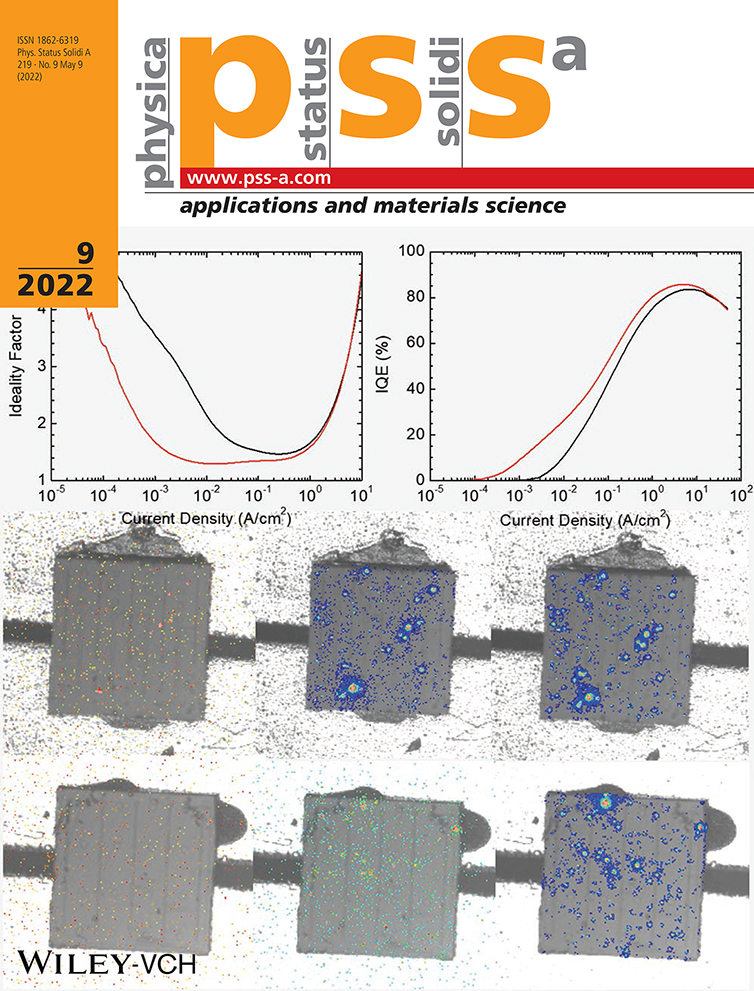Near Infrared Light-Sensing Organic Light-Dependent Resistors Based on Dialkoxybenzothiadiazole-Containing Conjugated Polymer
Abstract
Herein, near infrared light-sensing organic light-dependent resistors (NIR–OLDRs) is reported, that are fabricated with a planar geometry by employing poly[{3-(5-(7-methyl-5,6-bis(octyloxy)benzo[c][1,2,5]thiadiazol-4-yl)thiophen-2-yl)-6-(5-methylthiophen-2-yl)}-co-{2,5-bis(2-octyldodecyl)-2,5-dihydropyrrolo[3,4-c]pyrrole-1,4-dione}] (PDPP-8OBT) as an active layer. The PDPP-8OBT polymer, which is synthesized by the Stille coupling reaction of corresponding monomers, shows a broad absorption up to ≈1000 nm (wavelength) and good thermal stability with a glass transition temperature of >200 °C. A high-power laser diode, which emits a monochromatic NIR light (wavelength = 905 nm) for light detection and ranging (LiDAR) systems, is used to examine the characteristics of NIR–OLDRs. Results show that the present NIR–OLDRs can successfully detect the 905 nm NIR light and their electrical resistance (and photocurrent) is sensitive to the incident intensity of NIR light. In particular, for both regular and semitransparent devices, the best NIR light-sensing performances are achieved by device annealing at 150 °C (change of resistance = 34.5%) due to the increased crystallinity of PDPP-8OBT films. The present NIR–OLDRs exhibit excellent sensing stability upon optical on/off modulations of NIR light (905 nm).
Conflict of Interest
The authors declare no conflict of interest.
Open Research
Data Availability Statement
Research data are not shared.




